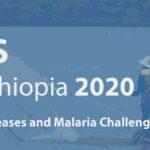IUIS-FAIS Immuno-Ethiopia course co-sponsored by the IUIS, FAIS and Volkswagen Foundation took place between 23rd-29th of February. The theme of this meeting was Neglected Tropical Diseases and Malaria challenges in Sub-Saharan Africa. This week we highlight talks by Dr David Sacks (National Institutes of Health, USA) which focused on Xenodiagnosis of Leishmaniasis
His lecture was on “Xenodiagnosis to evaluate transmission dynamics of visceral leishmaniasis in Bihar, India”. After talking about visceral leishmanias (VL) demographical distribution and the vectors involved, Dr Sacks focused on the Kala-azar elimination program in the South Asia Region and their goal to reduce incidence to <1 per 10,000 population at risk. He explained that this strategy to decrease transmission relies on early VL diagnosis and treatment, as well as vector control followed by post-elimination/maintenance phase. He higlighted that the strategy needs to shift from preventing disease to preventing infection and interrupting transmission which would require maintenance of effective surveillance through passive and active case detection. Dr Sacks also added “if transmission is predominantly driven by asymptomatically infected hosts who are not eligible for treatment, only vector-related interventions have the potential to sustain the elimination effort’’. He suggested that the majority of infections with L. Donovani are asymptomatic and there is abundant evidence that asymptomatic individuals are infectious.
Dr Sacks mentioned that their objective is to explore the relative ability of specific human-subject groups from across the infection spectrum to serve as reservoirs of Leishmania donovani infection for sand flies in areas of anthroponotic transmission. They plan to achieve this using xenodiagnosis which is the detection of a parasite by feeding supposedly infected material (e.g blood) to a suitable intermediate host and later examining the intermediate host responses for the parasite. Using an established sand fly colony, they found out that sand fly infectivity correlates with severity of VL disease and that 9.0% of cured VL subjects transmitted infection to flies as revealed by qPCR. Post kala-azar dermal leishmaniansis (PKDL) patients were infectious to sandflies while none of the asymptomatic subjects were infectious to flies. Dr Sacks concluded that these findings inform the VL elimination strategy by suggesting that maintaining effective surveillance through passive and active case detection i.e.early treatment of VL and PKDL cases. Also via vector control by confining spraying to households/contiguous households of incident VL cases and to switch to a more precise, targeted methods of vector control or individual protection, e.g. insecticidal treated nets.
Article by Naffesa Al Sheik
